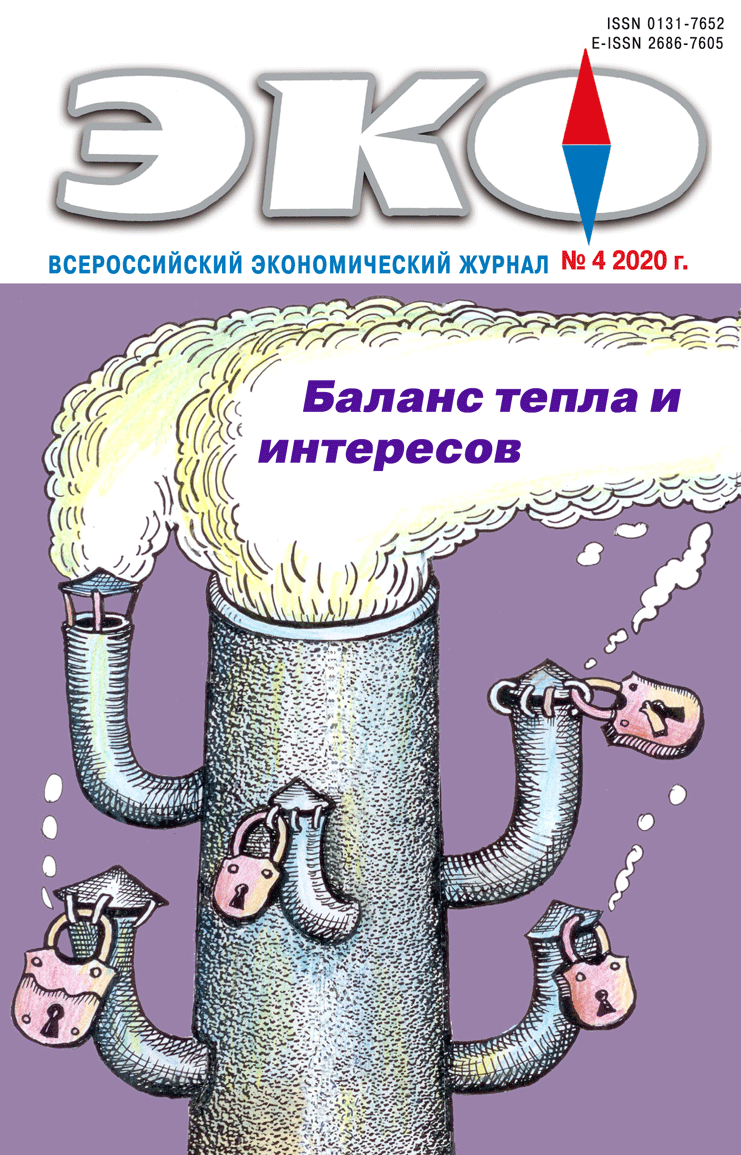ECONOMIC SOCIOLOGY AND DEMOGRAPHY
Spatial Mobility of Residents of the Novosibirsk Region (Based on the Mass survey of Residents of the Region in 2018)
Published 2020-04-04
Keywords
- spatial mobility,
- pendulum migration,
- metropolitan area,
- subjective assessment,
- living conditions
- sociological survey,
- Novosibirsk region ...More
How to Cite
1.
Mosienko Н, Ivanova В, Dyyachkova П. Spatial Mobility of Residents of the Novosibirsk Region (Based on the Mass survey of Residents of the Region in 2018). ECO [Internet]. 2020 Apr. 4 [cited 2025 Dec. 30];50(4):146-65. Available from: https://ecotrends.ru/index.php/eco/article/view/4009
Abstract
The paper presents the results of a study of spatial mobility and pendulum migrations of residents of the Novosibirsk region. The research was based on a mass survey of residents of the Novosibirsk Region conducted in July 2018; the method of collecting information was a formalized telephone interview. The authors estimate the scale of spatial mobility and pendulum migrations of residents of the region. For analysis purposes, the territory of the Novosibirsk region was conditionally divided into 5 enlarged territorial zones: the city of Novosibirsk (agglomeration center), the periphery of the agglomeration, the eastern part of the Novosibirsk region (without agglomeration), the central part of the Novosibirsk region and the western part of the Novosibirsk region. The differences in spatial mobility and pendulum migrations between the territorial zones of the region are determined by the following parameters – regularity, frequency, goals, duration of trips and type of transport used. Assessment of different conditions for work, leisure, education, and medical care for enlarged territorial zones is also described: highest assessment of sufficient opportunities in all aspects of living conditions were given by residents of Novosibirsk, residents of other territorial zones assess the quality of living conditions in their settlements lower in all respects, which is one of the incentives for spatial mobility.References
- Бугаев М. А. Маятниковые миграции на рынке труда Санкт-Петербурга и Ленинградской области // Вестник Санкт-Петербургского университета. Серия 5. 2015. Вып. 4. С. 86–116.
- Горяченко Е. Е., Мосиенко Н. Л. Городская агломерация как элемент социально-территориальной структуры общества // ЭКО. 2014. № 5. С. 56–68.
- Зубаревич Н. В. Развитие российских агломераций: тенденции, ресурсы и возможности управления // Общественные науки и современность. 2017. № 6. С. 5–21.
- Лаппо Г. М. Целенаправленное формирование городских агломераций // Проблемы развития агломераций России: сборник статей. М.: КРАСАНД, 2009. С. 8–16.
- Лаппо Г. М. Города России. Взгляд географа. М.: Новый хронограф, 2012. 504 с.
- Любовный В. Я. Городские агломерации России: проблемы развития и регулирования // Проблемы развития агломераций России: сборник статей. М.: КРАСАНД, 2009. С. 17–33.
- Между домом… и домом. Возвратная пространственная мобильность населения России / Аверкиева К. В. и др. М.: Новый хронограф, 2016. 500 с.
- Мосиенко Н. Л. Городская агломерация как объект социологического исследования // Регион: экономика и социология. 2010. № 1. С. 163–178.
- Некрасова Е. В. Оптимизация внутренней миграции как механизм решения проблем моногородов Свердловской области // Экономика региона. 2012. № 2. С. 315–320.
- Перцик Е. Н. Крупные городские агломерации: развитие, проблемы проектирования // Проблемы развития агломераций России: сборник статей. М.: КРАСАНД, 2009. С. 34–46.
- Пузанов А., Попов Р. Подходы к оценке развитости городских агломераций. М.: Институт экономики города, 2017. 32 с.
- Шитова Ю. Ю. Маятниковая трудовая миграция в Московском регионе // Демоскоп Weekly. 2017. № 569–570. С. 1–18.

